Causes and treatment methods of motor broken shaft, shifting shaft and large motor axial vibration

The broken shaft of the motor mostly occurs at the root of the shaft extension and the root of the bearing position at the end of the shaft extension.
If there is a shaft fracture phenomenon in the motor, macroscopic observation and microscopic analysis of the shaft fracture surface should be carried out to find out the location and cause of the fracture crack source, and fundamentally suppress the problem.
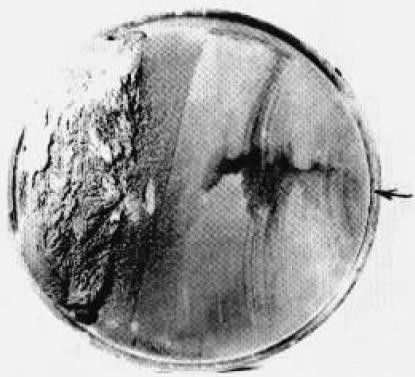
The fracture surface of the shaft is in the area of the transition fillet where the bearing is mounted on the shaft (root of the bearing). If the fracture surface is neat and perpendicular to the axial direction, there will be no necking and plastic deformation marks. The fracture fatigue band is obvious, extending from the outer circle to the center, and the final instantaneous fracture area is less than 15% of the axial cross-sectional area.

Mechanics calculation and analysis of the motor shaft Since the motor shaft is a stepped shaft, the moments and stresses on different stepped sections are different. When the motor is running, the shaft is subjected to the combined action of bending torque. If a certain stepped section bears too much stress, cracks and fractures may first appear at the transition arc of the stepped section. Therefore, finding out the dangerous section of the motor shaft is important It plays an important role in judging the cause of shaft fracture.
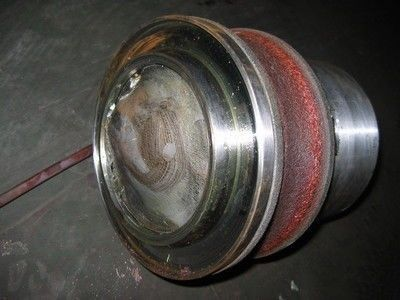
Reasons for motor shaft fracture
The fracture of the motor shaft is the result of the superposition of multiple factors. Here are some of the most common reasons:
1. Create potential quality problems. The fracture form of the motor shaft belongs to low-stress rotating bending fatigue fracture. The root cause is that there are defects in the production and processing of the motor shaft, such as no process control requirements for the transition fillet of the shaft shoulder, no heat treatment after welding, and excessive inclusions in the surfacing layer, resulting The stress concentration of the shaft shoulder fillet causes fatigue cracking under the action of the rotating bending moment, which eventually leads to the fracture of the motor shaft.
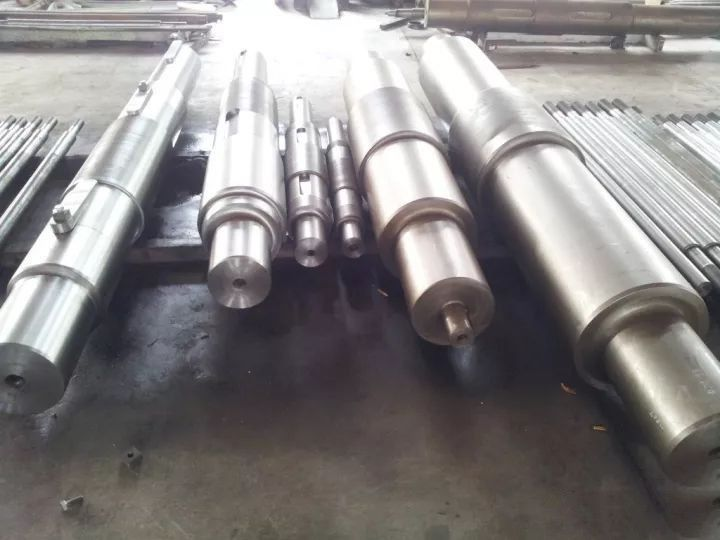
2. Installation problem. If the belt pulley is used for transmission, the tension of the belt is too large (greater than the value recommended by the belt manufacturer), which increases the load on the motor shaft, which is the contributing factor to the breakage of the motor shaft. If the motor installed with a coupling cannot ensure the coaxiality of the motor and the axis of the equipment, it will also cause fatigue fracture of the shaft.

3. The shaft of the web is broken. Excluding installation factors, irregular cracks often appear on the web plate shaft at the welding position of the web plate. Most motor manufacturers solve the problem of such shafts by annealing and processing stress grooves at both ends of the web plate and the main shaft. Shaft problem.
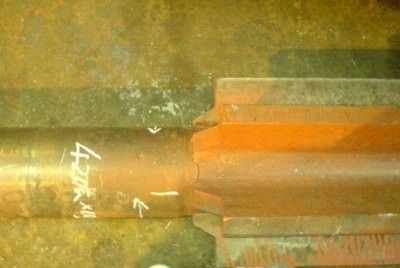
No matter what kind of motor is at any time, the shaft should not be shifted. There is a little amount of activity, which has little effect on the motor itself. Specific issues such as affecting other devices.
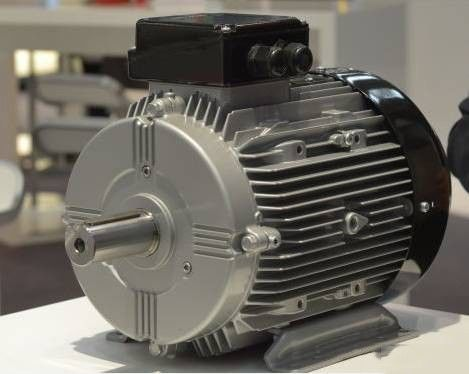
Analysis of the Causes of Motor Shaft Displacement
1. The mechanical center is inconsistent with the magnetic field center. When the motor is running, its rotor will be positioned at the center of the magnetic field, and there is a mechanical center between the rotor main shaft and the two bearings (that is, the position where the distance between the shaft shoulders at both ends of the motor rotor and the bearings is equal). There may be inconsistencies between these two centers. If the shaft shoulder distance is adjusted based on the mechanical center during installation, the rotor will be automatically positioned at the center of the magnetic field after the motor is started, and the axial movement of the motor shaft will destroy the original adjustment during installation. axial spacing. When the deviation is not large, for the gear coupling, it can be compensated by the reserved axial clearance of the inner and outer gear sleeves; if it exceeds the reserved axial clearance of the coupling, the coupling and the driven shaft will be affected An axial external force causes friction on the end faces of the components, resulting in harmful effects such as heat generation.

2. For the sliding bearing motor, there is an error when the rotating shaft system finds the center according to the coupling. The deviation of the misalignment of the shaft in the bearing will add a large additional torque to the bearing. Since the motor rotor can swim back and forth axially within a certain range, when the center of the shaft system is not correct, the coupling will produce an axial split in a fixed direction. Under the action of the axial component force, the rotor overcomes the magnetic field force and pushes to one side, resulting in dynamic and static friction between the oil retaining shoulder of the motor rotor and the outer Babbitt alloy of the bearing.

3. The lift at both ends of the motor rotor does not meet the requirements. The unreasonable lift of the journals at both ends of the motor rotor will cause the motor rotor to slide to the end with the smaller lift against the magnetic field force under the action of the axial component force of its own gravity. Therefore, a reasonable lift at both ends of the motor shaft is the key to eliminating the axial component.
The rotor has static deflection due to its own weight, which means that when the rotor is placed horizontally, the two ends or the journal will rise upwards. The lift value measured with a precision level is customarily called the rotor lift.
In view of various reasons for motor shaft shifting, problems should be avoided in the process of motor design, manufacture and installation, and it is also critical to suppress and prevent problems through some necessary means in the actual process.
● Choose interference fit for the fit between the shaft and the rotor. If there is movement due to fit problems, most of them are due to problems with the machining size of the shaft, because the inner diameter of the rotor shaft hole is determined by the die, and there will be no major problems in theory.
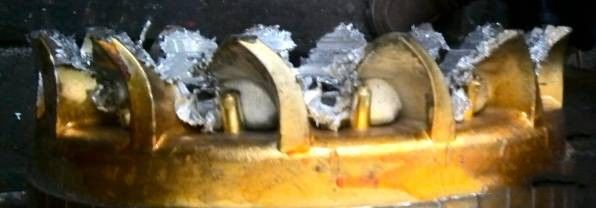
● The wave spring washers at both ends of the bearing are not installed, or there is a problem with the quality of the wave spring washers. Some motors have relatively strict requirements on the amount of movement of the shaft. Motor manufacturers solve the problem by adding wave spring washers, and some manufacturers add stop retaining rings to the end caps of small motors that use sealed bearings.

● The axial force generated by the fan, that is, the axial force of the wind on the fan blades when the motor is running, but the resulting movement is very small.
● The matching between the bearing and the end cover is not suitable, or there is a large gap between the two due to processing quality problems.
-
Power supply: three-phase voltage (unbalanced, three-phase motor running without phase)
-
In terms of stator: iron core becomes elliptical, eccentric, loose, winding disconnection, grounding breakdown, inter-turn short circuit, wrong wiring and unbalanced three-phase current.
-
Rotor fault: The iron core becomes elliptical, eccentric, and loose, and the rotor short-circuit ring and cage bars are welded and broken. Wound rotor three-phase unbalanced winding, winding disconnection, grounding breakdown, turn-to-turn breakdown, wrong wiring, poor contact of brushes
-
In terms of the motor itself: the rotor is unbalanced, the shaft is bent, the slip ring is deformed, the air gap between the stator and the rotor is uneven, and the magnetic center is inconsistent. Bearing failure: Poor foundation installation. Not enough mechanical strength. Resonance, loose anchor screws, damaged motor fan. When the bearing is running close to its service life, the vibration of the motor will gradually increase, and there will be noise in the running of the bearing, and the phenomenon of grinding the shaft and cover and sweeping may occur.
-
In terms of coupling coordination: coupling damage, poor connection, inaccurate centering, load mechanical unbalanced system resonance.
-
The vibration of the motor is often due to the uneven air gap, which causes unilateral electromagnetic pulling force, which further increases the air gap, and the electromechanical mixing effect is manifested as electromechanical vibration.
-
The axial series movement of the motor, the gravity of the rotor itself or the installation level and the electromagnetic pull caused by the wrong magnetic center will cause the axial series movement of the motor, which will increase the vibration of the motor. In severe cases, the bearing bush will wear out and the temperature of the bearing bush will rise rapidly. Find out the cause of the vibration.
1. Before the motor stops, check the vibration of each part with a vibration meter, and test the vibration value in detail in three aspects of the vertical and horizontal axes for the parts with large vibrations.
If the anchor screws or bearing end cover screws are loose, they can be tightened directly, and then the vibration is measured to see if it is eliminated or alleviated.
Secondly, check the three phases of the power supply: whether the voltage is balanced and whether there is a lack of phase. The lack of phase operation of the motor not only causes vibration but also causes the motor to heat up rapidly. Observe whether the pointer of the power meter swings back and forth, and the current swing will appear if the rotor is broken. Finally, check the motor Check whether the three-phase current is balanced, and stop the machine in time if any problem is found, so as to prevent the motor from burning out.
2. If the vibration of the motor is still not solved after the treatment of the surface phenomenon, the power supply must be disconnected to untie the coupling. If the motor vibrates during the dry test motor, it means that there is a problem with the motor itself. In addition, the power-off method can be used to distinguish electrical causes or mechanical causes. When the power is cut off, the motor will not vibrate or the vibration will be reduced immediately, indicating that it is an electrical cause or a mechanical failure. Repair the cause of the failure.
1. Electrical cause inspection: First, determine whether the three-phase DC resistance of the stator is balanced. If it is unbalanced, it means that there is an open welding phenomenon in the welding part of the stator connection. It is obvious that scorching marks can be seen from the insulating surface, or the stator winding is measured with an instrument, and after confirming the inter-turn short circuit, the electric winding is taken off the line again.
2. Overhaul for mechanical reasons: check whether the air gap is uniform, if the measured value exceeds the standard, readjust the air gap, check the bearing, replace the bearing if the measured gap is unqualified, check the deformation and looseness of the iron core, and epoxy resin glue can be used for the loose iron core Bonding and pouring, check the shaft, rework the bent shaft by repair welding or direct the straight shaft, and then do a balance test on the rotor.
3. The load mechanical inspection is normal, and there is no problem with the electrical itself. The fault is caused by the connection part. At this time, check whether the basic level, inclination, strength, and center alignment of the motor are correct, the coupling is broken, and the motor Whether the shaft phase ratio meets the requirements.



























 XINDA
XINDA